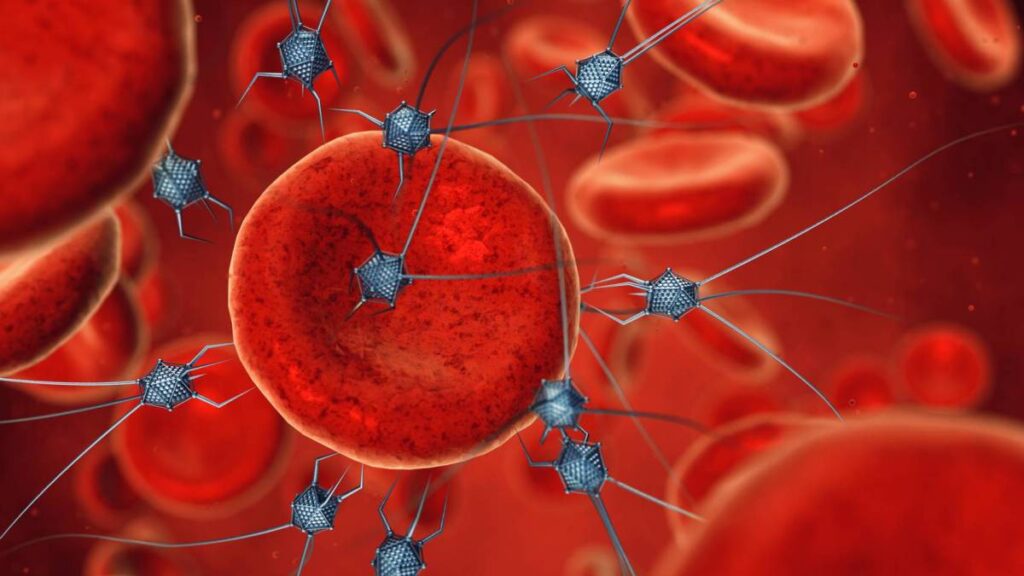Metamorphic super nanotechnology with collective intelligence

The MPTM, acronym in English for Magnetoactive Phase Transition Material. It is made of a metal that melts near room temperature, it can go from a solid to a liquid. It is approximately five millimeters wide and one centimeter high.
Magnetoactive phase transition matter is made of neodymium-iron-boron magnetic microparticles embedded within a gallium matrix. It heats up and undergoes a phase change from solid to liquid when exposed to an alternating magnetic field, and resolidifies when cooled.
A magnetic field at a certain intensity induces an electric current inside the gallium that generates heat, turning it from a solid to a liquid.
A nanorobot is a machine that can build and manipulate objects at the atomic level. A red blood cell has a diameter between 7 and 8,000 nanometers.
In a natural way, the human being has intracellular nanorobots such as the ribosome, which read the RNA and create a specific protein. It differs from Drexler’s wet, biological nanotechnology that assembles in a similar way to a 3D printer by printing atoms at the nanoscale and creating stable thermodynamic structures.
A nanomotor has been created from a single atom trapped in a cone of electromagnetic energy and lasers are used to heat and cool it, causing the atom to move back and forth like a piston in a machine.
Through DNA Origami it is already possible to manufacture complex mechanical parts of future nanorobots at the nanoscale. It has also been possible to equip medical nanorobots with the ability to swim to reach cancer cells in the bloodstream and discharge medicines into them.
There are already nanomotors with a force 100 times greater than their weight. Which allows nanorobots to penetrate cells and fight disease. Prototypes that feed on bacteria and can direct the growth of stem cells or build microstructures have also been achieved.
The new applications are unlimited. Like nanorockets, combining nanoparticles with biological molecules, to go anywhere in the body and deliver drugs. Detection and elimination of cancer cells. Internal administration of drugs. Nano particles to facilitate image detection. Omni-detection of internal and external environments.
Increased data storage capacity per gram of DNA, more than 700 terabytes. Effective energy saving in renewable energy systems. New generation of super resistant materials to be used in terrestrial and space engineering and architecture works.
Glasses that clean themselves and darken on their own, adjusting the light and temperature of the interior environments. Microsponges to clean the oceans. Molecular replicators or assemblers, which regulate chemical reactions to assemble reactive molecules with atomic precision. Multipurpose health sensors. Interconnectivity of brains with the Internet.
This is the present and tomorrow, the day after tomorrow it will be possible to reach metaform replicating supernanotechnology. This new generation of nanorobots that may be mechanical or biochemical extract the replication elements from the existing nutrients in the environment and ipso facto replicate in a similar way to the process of cell mitosis.
They have a collective intelligence and software that controls and directs them. Joining and assembling with each other they can take any form such as tools, houses and vehicles. Human beings who interact with this artificial nanotechnological life form can command changes, for example, they can order furniture to transform into others or their vehicles to change shape.
Another vital use of intelligent nanorobots is to interact with the environment, being able to decontaminate ecosystems and terraform entire exoplanets in short periods of time.
Https://www.amazon.com/author/robertoguillermogomes